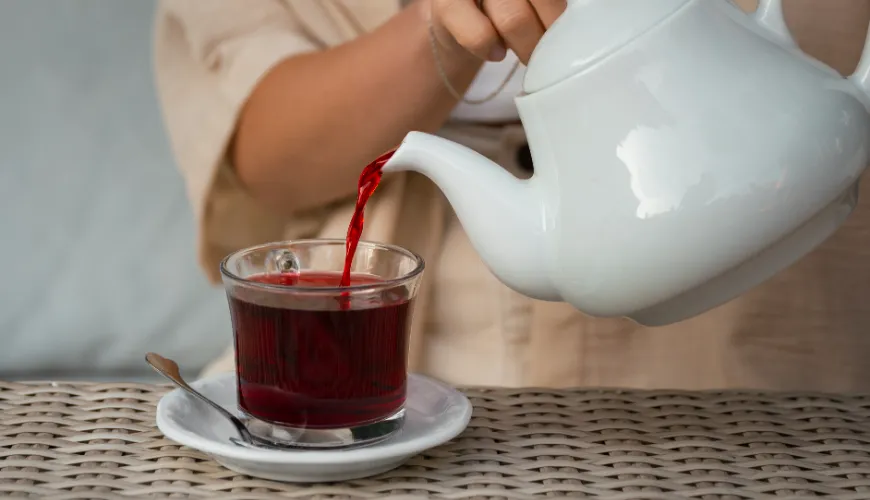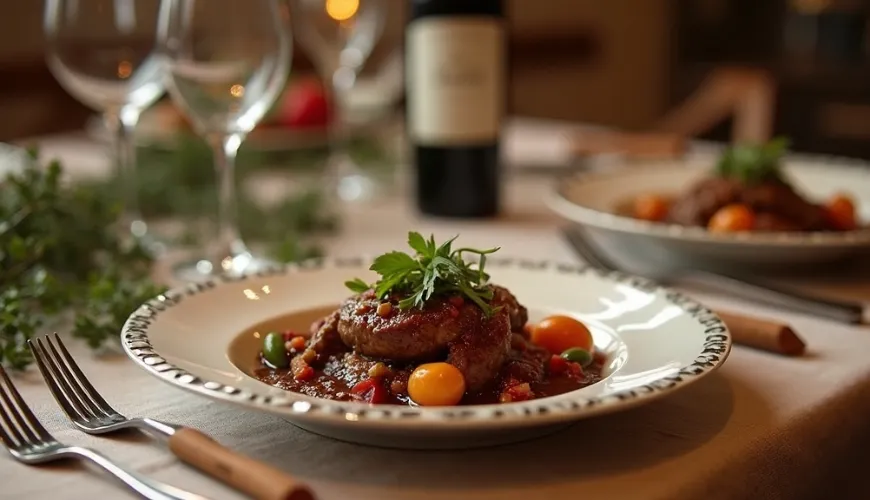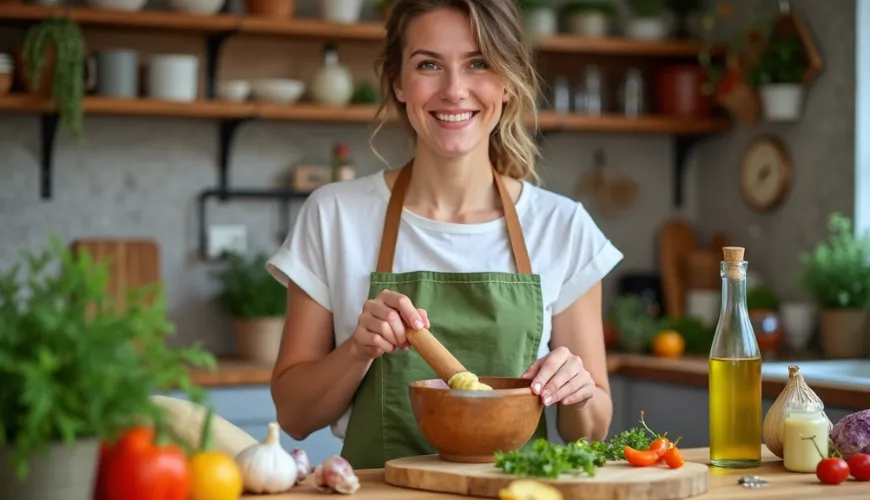
How to Prepare the Perfect Beef Bourguignon and Delight Your Loved Ones

The Secret of French Classics - How to Fall in Love with Beef in Wine
When one thinks of French cuisine, most people imagine the scent of freshly baked baguette, buttery croissants, or delicate cheeses. However, one of the true gems of this culinary tradition is undoubtedly beef bourguignon, also known as boeuf bourguignon. This dish, whose origins trace back to the heart of Burgundy, is proof that even with accessible ingredients, you can create a meal fit for a royal table.
Although at first glance bourguignon might seem like a distinctly festive dish, its roots are purely simple. Initially, it was a way to process tougher parts of beef by long simmering in wine, herbs, and vegetables. The result is perfectly tender meat that literally falls apart on the fork, surrounded by an aromatic sauce with a depth of flavor that can only be achieved with time and patience.
What Makes Beef Bourguignon So Special?
The foundation of this dish is quality beef – typically shank, neck, or brisket. These parts may not be the most attractive at first glance, but thanks to their high collagen content, they transform into a silky smooth texture during long cooking, which is characteristic of beef bourguignon.
The second equally important element is wine. And not just any wine. The French naturally choose Burgundy, a red wine from this region, whose mild acidity and tannins perfectly highlight the flavor of the meat. However, if you don't have authentic Burgundy at hand, a quality dry red from Moravia or Italy will serve almost as well.
Aromatic ingredients such as garlic, onion, carrot, thyme, or rosemary also play an important role. And let's not forget the bacon and mushrooms, which are added to the dish in the later stages, adding earthiness and richness.
The Cooking Process or Why It's Worth Slowing Down
In a world of fast food and five-minute recipes, preparing boeuf bourguignon might seem like an extravagance. But that's precisely where its charm lies. This dish is not about haste – it's about slow simmering, developing flavors, and the willingness to devote time to something truly deserving.
A typical beef bourguignon recipe starts with frying bacon, on whose drippings the beef is seared. Then vegetables are added, the meat is covered with wine and broth, herbs are added, and everything is simmered for two to three hours. Towards the end, sautéed mushrooms and onions are added, which add another dimension to the dish.
What's the most beautiful part? You can truly enjoy this process. While the dish simmers, the rich aroma of wine, meat, and herbs spreads through the home – something that awakens the taste buds long before serving.
A Small Glimpse of a Typical Day
Imagine a Saturday morning. Light rain is falling outside the window, soft music plays in the apartment, and you have a free afternoon ahead of you. Instead of reaching for fast food or a restaurant order, you open a bottle of red wine, pour yourself a glass, and start preparing traditional bourguignon. The slow chopping of vegetables, the sizzling of meat in the pan, and the first whiff of wine mixed with garlic – it's all a ritual that slows down time and brings us back to the essence of home cooking.
And when you sit down at the table in the evening, you're serving not just a meal but an experience. A dish that carries the trace of your effort, time, and care. Isn't that precisely what's missing today?
Tips for a Perfect Outcome
To make beef bourguignon truly unforgettable, it's worth following a few recommendations:
- Use quality red wine, preferably dry and full of flavor. It doesn't have to be expensive, but it should be good enough that you'd drink it on its own.
- Don't skimp on time – the meat needs at least two hours, ideally three, to become truly tender.
- Let the dish rest – similar to goulash, bourguignon tastes even better the next day.
- Serve with something simple, ideally mashed potatoes, buttery noodles, or fresh bread to soak up the sauce.
A Sustainable Alternative? Why Not
Although beef bourguignon is traditionally a meaty dish, more and more people are interested in replacing meat with a more sustainable approach without giving up culinary experiences. There are modern variations of this recipe that use, for example, portobello mushrooms, tempeh, or lentils as the base. The result is a dish that retains its rich flavor but is gentler on the planet. It's no wonder that even renowned chefs today experiment with these plant-based versions of classic dishes.
And if you want to take it a step further, you can choose ingredients from organic farming, opt for local wines, or buy meat from farmers who care about the well-being of animals.
Influence of Pop Culture and Return to Prominence
The worldwide popularity of beef bourguignon is undoubtedly also due to Julia Child, the American chef who brought French cuisine closer to the American audience in the mid-20th century. Her famous quote "Never fear butter" circulates the internet today just like her recipe for boeuf bourguignon, which has inspired millions of home cooks around the world.
Thanks to movies like Julie & Julia or cooking shows, this dish has returned to the forefront of interest. It's no longer just food for the chosen few – it's a symbol of a return to honest, lovingly prepared meals.
Just look at online search results – phrases like “beef bourguignon recipe”, “how to make beef in wine”, or “boeuf bourguignon step by step” are among the most common queries when people seek inspiration for festive dinners or weekend cooking.
A Hidden Story in Every Serving
So what makes beef bourguignon more than just food? It might be precisely that contrast – the combination of simple ingredients with an extraordinary result. A dish reflecting the French relationship with food as art. Where speed is not the main factor, but the experience is.
And perhaps now is the right time to embark on it. Not just for the taste, but for the act of cooking itself. After all, as the French saying goes: “Cooking is love that can be tasted.”

